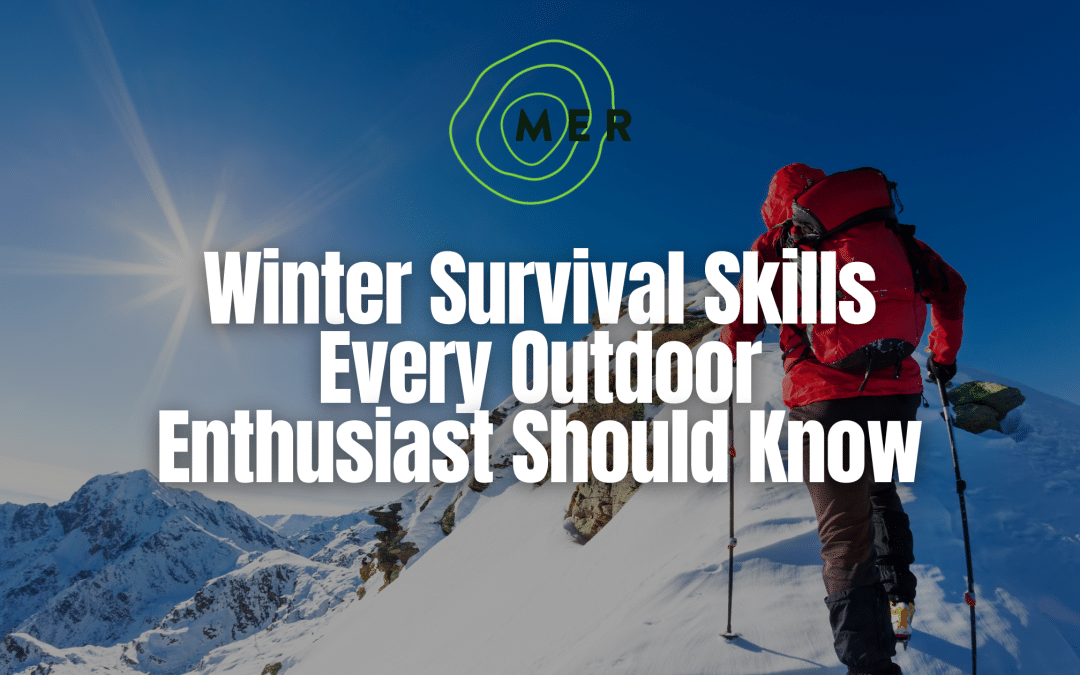Winter adventures can be breathtaking and exhilarating, but they also come with unique challenges and risks. To make the most of your cold-weather outings while staying safe, it’s essential to master a few key survival skills. Here are five critical winter survival skills every outdoor enthusiast should know:
Building a Snow Shelter
When conditions turn harsh or you find yourself stranded, knowing how to build a snow shelter can save your life.
- Types of Shelters: Quinzhees, snow caves, and igloos are popular options depending on the snow conditions.
- Steps to Build a Snow Cave:
- Find a snowdrift or mound of snow.
- Dig into the side, creating a tunnel that leads to a small chamber.
- Make the ceiling rounded to prevent collapses and create ventilation holes.
- Pro Tip: Always carry a lightweight shovel in your winter gear pack.

Navigating in Snowy Conditions
Snow can obscure trails and landmarks, making navigation tricky.
- Map and Compass: Learn to use these tools as a reliable backup to GPS devices.
- Mark Your Trail: Use brightly colored markers or flagging tape to ensure you can retrace your steps.
- Avoid Whiteouts: If visibility drops, stop and wait for conditions to improve to avoid getting disoriented.
- Take a course: Colorado Mountain School offers in depth courses on how to navigate using a map and compass.

Packing a Winter Survival Kit
A well-packed survival kit can mean the difference between a minor inconvenience and a dangerous situation.
- Essentials to Include:
- Thermal blanket and extra layers.
- High-energy snacks and a portable stove or fire-starting kit.
- Emergency signaling tools like a whistle and mirror.
- Compact first aid kit with frostbite treatment supplies.
- Pro Tip: Store items in waterproof bags to keep them dry.

Staying Warm and Dry
Hypothermia is a serious risk during winter outings, so proper clothing and techniques are crucial.
- Layering System:
- Base Layer: Moisture-wicking to keep sweat away from your skin.
- Insulating Layer: Fleece or down to retain heat.
- Outer Layer: Waterproof and windproof to protect from the elements.
- Prevent Moisture: Avoid sweating by regulating your activity level and venting layers as needed.
- Emergency Warmth: Pack hand warmers and know how to create an insulated area to conserve body heat.
- Choosing the right gear: Check out our blog on Choosing the Best Winter Hiking Gear.

Finding and Purifying Water
Even in snowy environments, dehydration can occur. Knowing how to find and purify water is essential.
- Melting Snow:
- Use a portable stove to melt snow into drinking water. Avoid eating snow directly, as it lowers your core temperature.
- Purification: Carry water purification tablets or a small filtration device to eliminate bacteria and contaminants.
- Look for Streams: Flowing water under ice is often safer than stagnant sources.

Conclusion
Winter survival skills are vital for anyone venturing into snowy wilderness. By preparing properly and mastering these techniques, you can confidently embrace the beauty and challenges of winter adventures. Remember, safety always comes first—equip yourself with the right knowledge, tools, and gear before heading out.
Find up to date avalanche conditions here!
Happy adventuring!


